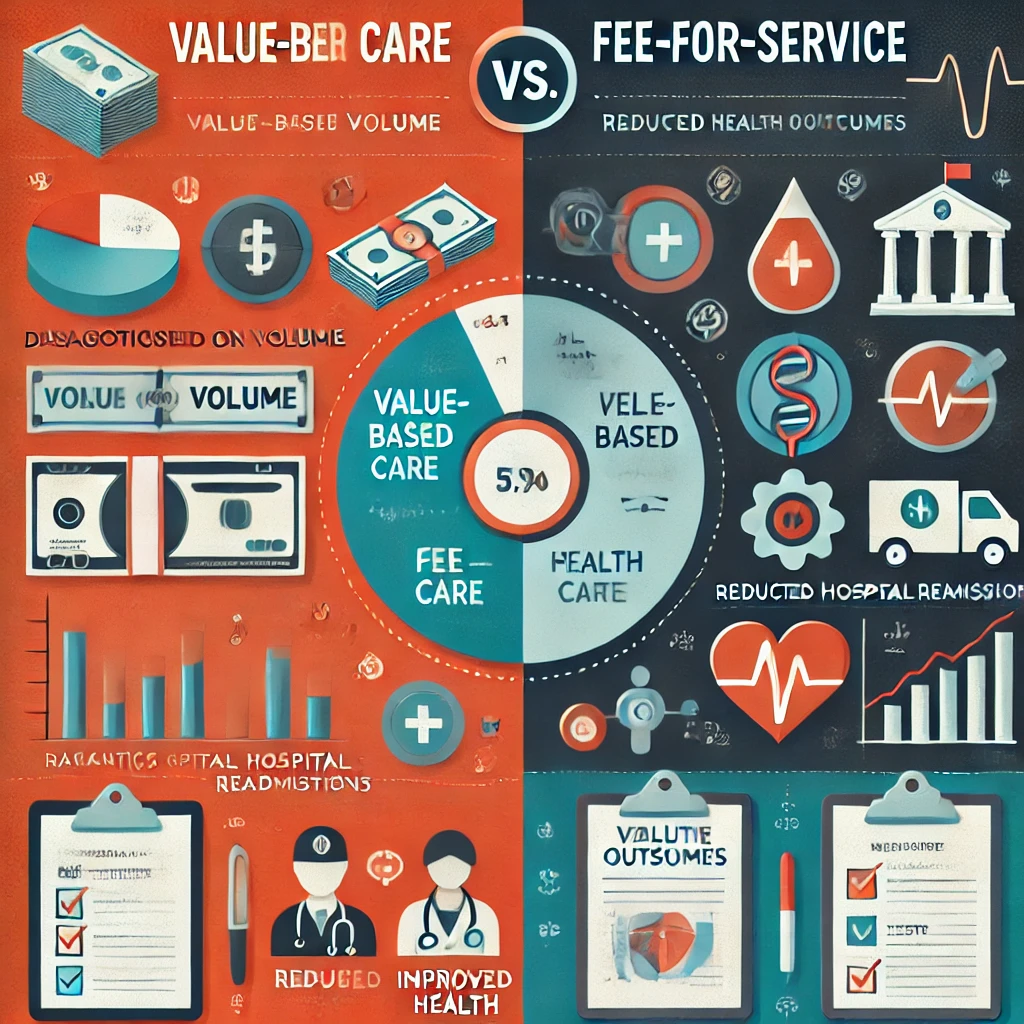
Healthcare is undergoing a transformative shift as the industry pivots from the traditional fee-for-service model to value-based care. This transition prioritizes patient outcomes over service volume, aiming to improve quality while reducing costs. Central to achieving this goal is healthcare analytics—a data-driven approach that equips organizations with insights to deliver better care, streamline operations, and enhance financial performance.
Healthcare analytics provides actionable insights derived from clinical, operational, and financial data. It enables healthcare professionals to understand past trends, identify patterns, predict future outcomes, and make informed decisions. As the backbone of value-based care, analytics empowers healthcare providers to align their efforts with patient-centric goals.
Understanding Healthcare Analytics
Healthcare analytics is a broad discipline encompassing various methods of data analysis, each designed to address specific challenges:
- Descriptive Analytics focuses on what has happened by providing historical data and insights into trends, such as patient demographics, treatment outcomes, or hospital readmission rates.
- Diagnostic Analytics delves into why something happened by identifying root causes and correlations, such as the factors contributing to an increase in emergency room visits.
- Predictive Analytics forecasts what is likely to happen by leveraging algorithms and machine learning to predict events like disease progression or patient readmissions.
- Prescriptive Analytics suggests actionable steps by analyzing data to recommend specific interventions, such as identifying the best treatment plan for a particular patient group.
Each of these analytics types plays a unique role in addressing the challenges faced by healthcare providers in transitioning to value-based care.
Enhancing Patient Outcomes Through Analytics
One of the primary objectives of value-based care is to improve patient outcomes. Predictive analytics is a critical tool in achieving this goal. By analyzing patient data, predictive models can identify individuals at high risk of developing chronic conditions or experiencing complications. For example, patients at risk of hospital readmission can be flagged, allowing healthcare teams to implement targeted interventions such as enhanced discharge planning or follow-up care.
Population health analytics is another essential application. By examining trends in community health, providers can identify areas that require attention. For instance, rising rates of diabetes in a specific population may prompt public health initiatives, patient education programs, or targeted screenings. This proactive approach not only improves outcomes but also reduces the long-term costs associated with unmanaged chronic conditions.
Driving Cost Reduction
Reducing healthcare costs without compromising quality is a cornerstone of value-based care. Analytics helps organizations identify inefficiencies and cost drivers, enabling more strategic resource allocation. Operational analytics, for instance, can optimize staffing levels by predicting patient volumes, ensuring that hospitals and clinics are neither over- nor understaffed. This reduces overtime expenses and improves staff morale.
Clinical analytics can identify unnecessary or redundant tests and procedures, eliminating waste and focusing resources where they are most needed. For example, analyzing diagnostic patterns may reveal that certain tests are frequently ordered together without adding clinical value, prompting policy changes that streamline care delivery.
In addition, analytics supports better supply chain management. Hospitals can analyze procurement data to optimize inventory levels, reducing the costs associated with overstocking or emergency purchases.
Improving Care Coordination
Value-based care emphasizes collaboration among healthcare providers to deliver comprehensive, coordinated care. Analytics facilitates this by breaking down silos and enabling seamless information sharing. Integrated data platforms provide care teams with a unified view of patient records, ensuring that all providers have access to the same information.
This real-time visibility reduces redundancies and prevents conflicting treatments. For instance, if a patient’s primary care physician prescribes a new medication, analytics-enabled systems can alert specialists of the change, minimizing the risk of adverse interactions.
Care coordination is particularly important during transitions of care, such as moving a patient from hospital to home. Analytics can identify patients who are at high risk of complications during this period, enabling targeted support such as home health visits or remote monitoring.
Empowering Providers and Patients
Data-driven insights empower providers to deliver high-quality care. By benchmarking their performance against industry standards or peer groups, providers can identify areas for improvement. For instance, analytics may reveal that a clinic’s vaccination rates are below average, prompting targeted outreach efforts to increase compliance.
Patients also benefit from analytics through enhanced engagement and transparency. Tools like patient portals allow individuals to access their medical records, track their progress, and participate actively in their care. Wearable devices and mobile health apps further enhance this engagement, providing patients with real-time feedback on their health metrics.
Overcoming Implementation Challenges
Despite its benefits, implementing healthcare analytics comes with challenges. One major barrier is the fragmentation of data across different systems and providers. Many organizations still operate in silos, making it difficult to integrate data into a cohesive platform. Achieving interoperability—where disparate systems can communicate and share information effectively—is critical for realizing the full potential of analytics.
Data privacy and security are also significant concerns. As healthcare organizations collect and analyze more data, they must ensure compliance with regulations such as HIPAA. Investments in robust cybersecurity measures, including encryption and access controls, are essential to protect patient information from breaches.
Another challenge is the shortage of skilled analysts who can interpret complex datasets. Training programs and partnerships with technology providers can help address this gap, equipping healthcare professionals with the skills needed to leverage analytics effectively.
The Future of Healthcare Analytics
As technology advances, the role of analytics in healthcare will continue to expand. Artificial intelligence (AI) and machine learning are revolutionizing the field, enabling the analysis of vast datasets with unprecedented speed and accuracy. For example, AI algorithms can predict disease progression based on genetic, lifestyle, and clinical data, allowing for highly personalized treatment plans.
Real-time analytics powered by IoT devices and wearable technology is another emerging trend. By continuously monitoring patient health, these tools provide immediate insights that can prompt timely interventions. For example, a smartwatch detecting irregular heart rhythms can alert both the patient and their care team, preventing potential emergencies.
Value-based contracts between payers and providers are also benefiting from analytics. These tools track performance metrics, ensuring accountability and facilitating the equitable sharing of cost savings. For instance, analytics can measure the impact of a bundled payment model on patient outcomes and total cost of care, helping organizations refine their strategies.
A Data-Driven Path Forward
Healthcare analytics are at the heart of the industry’s shift to value-based care. By harnessing the power of data, healthcare organizations can deliver better outcomes, reduce costs, and create a more efficient and equitable system. While challenges remain, the potential benefits far outweigh the obstacles.
Investing in analytics capabilities is no longer optional for healthcare organizations seeking to thrive in a value-based environment. It is a necessity for ensuring sustainability, competitiveness, and, most importantly, the well-being of patients. By embracing data-driven decision-making, the healthcare industry can chart a path toward a future where high-quality care is accessible, affordable, and sustainable for all.
